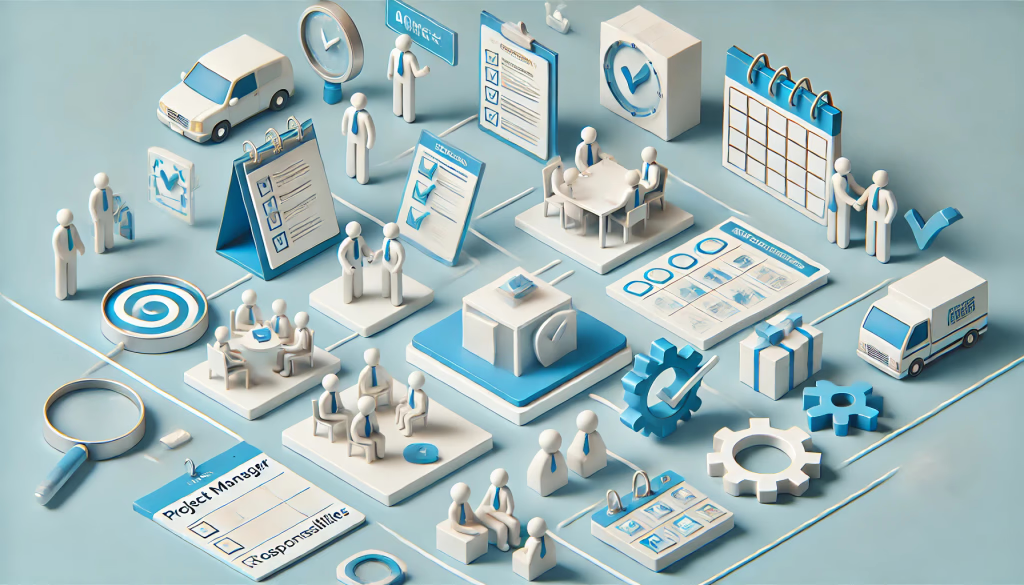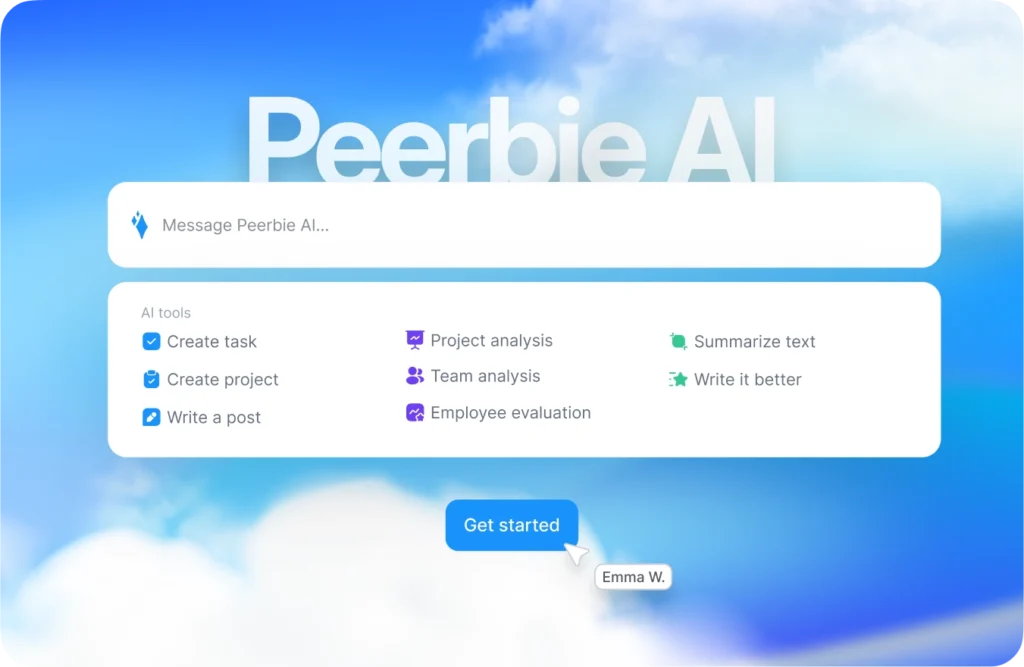14 Key Project Manager Roles and Responsibilities

Project planning is the foundation of successful project management. This includes creating a roadmap that describes what will fall under the scope and objectives, etc., of your project. Planning of the project, which allows you to get detailed timelines where tasks and necessary resources are designated. A mature project plan is the roadmap for a Project Team and every activity fits to achieve_project goal.
What is a Project Manager?
A project manager is the person responsible for planning, executing, and completing projects on time, within budget, and according to the agreed scope. Unlike a team lead or supervisor, a project manager takes full ownership of the project’s success or failure.
They work as the bridge between stakeholders, team members, and top management. Project managers oversee all phases of the project lifecycle, from inception to closure, ensuring smooth operations at every step.

Why Are Project Manager Roles and Responsibilities Important?
Without clear roles and responsibilities, projects can quickly go off track. The project manager acts as the glue that holds the project together, ensuring that team members stay on task, stakeholders remain informed, and deadlines are met.
Project managers are essential for the following reasons:
- Accountability: They hold the team accountable for deliverables.
- Focus and Clarity: By defining roles, team members know exactly what to do.
- Risk Management: Identifying and managing risks early prevents costly delays.
If project managers didn’t exist, teams would be like ships without captains — moving aimlessly with no clear direction.
Project managers employ a range of project planning tools and methodologies as the structure for these plans. In the visualization side, for project timelines and tasks Gantt charts or Kanban boards are among most used ones. Further to that, adding agile project management methods can make it much easier for any required changes and reduce the rigidity in planning.

- Project Planning
Project planning is the cornerstone of effective project management. It involves developing a roadmap that outlines the project’s scope, goals, and outcomes. This phase involves creating detailed timelines, assigning tasks, and determining required resources. A solid project plan serves as a guide for the project team and helps ensure that all activities are aligned with project goals.
Project managers use various project planning tools and methodologies to structure their plans. For example, Gantt charts and Kanban boards are popular for visualizing project timelines and tasks. Additionally, incorporating agile project management techniques can help in accommodating changes and ensuring flexibility in the planning process.

- Resource Allocation
Allocating resources efficiently is a critical task for project managers. Resources may include personnel, equipment, materials, and budget. This is to ensure that the right assets are available at the right time so they can meet the needs of a project without overburdening themselves or spending too much.
Resource management software is a popular tool for project managers to keep track of resource usage and optimize it. These tools can give sight into what resources are available to you and also aid in isolating where bottlenecks may occur. Optimizing resource allocation eliminates unproductive hours and makes the project more effective; it also plays a tremendous role in team morale as it helps to create happy employees who continue on with their work throwing themselves over any obstacle that presents itself.
- Budget Management
Keeping a close eye on the budget is another critical role for project managers. This includes estimating costs, securing funds and expenses, especially throughout the life cycle of a project. A good budget controls expenses and helps maximize financial resources.
Discussion project manager’s tools to keep track of budget and financial management software to keep an eye on everything. Ongoing financial reviews and adjustments are essential to sustain project expenditures without compromising the project’s financial constraints and objectives.
- Risk Management
Every project faces potential risks that could threaten its success. Risk management involves identifying these risks, assessing their impact, and developing strategies to mitigate them. This proactive approach helps minimize the likelihood of risks becoming issues that derail the project.
There are several risk assessment tools and techniques project managers use to identify, assess risks. Common tools to assess the consequences and likelihood of risks include SWOT analysis and risk matrices. It helps improve risk management as well by fostering continuous review and adaptation which is a feature of Agile.
- Stakeholder Communication
Effective communication with stakeholders is crucial for project success. Stakeholders include anyone affected by the project, such as team members, clients, and executives. Project managers must ensure that all stakeholders are kept informed about project progress, changes, and issues.
You can also use collaboration software, and team communication tools help to communicate easily. Keep Returning to Stakeholders With Updates, Meetings, and Reports It also aids refinements in trust and better collaboration among the participants, making project environment positive.

- Quality Control
Maintaining high standards of quality is essential for delivering successful project outcomes. Quality control involves setting quality benchmarks, conducting regular inspections, and ensuring that deliverables meet the required standards. This process helps prevent defects and ensures that the project’s outputs are fit for purpose.
Project managers utilize quality management tools and frameworks, such as Six Sigma or ISO standards, to maintain quality. These tools provide systematic approaches to quality assurance and help in identifying areas for improvement. Regular quality reviews and feedback loops ensure that quality remains a top priority throughout the project.
- Time Management
Time management is critical to ensure that projects are completed on schedule. Project managers must develop detailed timelines and monitor progress against these schedules. This involves setting deadlines, prioritizing tasks, and managing dependencies between tasks.
In order to manage time efficiently, project scheduling software and task management tools are considered as necessary. These are tools used by project managers to monitor and track, highlight where projects may be slipping behind schedule and have the flexibility that allows for scheduling change. Proper time management not only ensures the project is on target but minimizes stress and improves team efficiency.
- Leadership in Project Management
Leadership is a core component of project management. Project managers must inspire and motivate their teams, resolve conflicts, and ensure a collaborative work environment. Effective leaders can drive their teams towards achieving project goals and overcoming challenges.
Leadership in project management involves setting a vision, building trust, and fostering a positive team culture. Project managers must also be adept at decision-making and problem-solving. Utilizing collaborative work platforms can enhance team coordination and support leadership efforts.
- Problem Solving in Projects
Projects often encounter unforeseen challenges that require prompt and effective problem-solving. Project managers must be adept at analyzing issues, identifying root causes, and implementing solutions. This requires a combination of critical thinking, creativity, and technical knowledge.
Using problem-solving techniques such as root cause analysis and brainstorming can help in addressing project hurdles efficiently. Collaboration and open communication are also crucial for effective problem-solving. Digital collaboration tools can facilitate team discussions and support the problem-solving process.
- Performance Monitoring
Continuous monitoring of project performance is essential to ensure that it stays on track. This involves tracking key performance indicators (KPIs) and making adjustments as needed to align with project objectives. Performance monitoring helps identify areas for improvement and supports informed decision-making.
Project managers use performance monitoring tools and dashboards to gain real-time insights into project progress. These tools provide visual representations of data, making it easier to identify trends and potential issues. Regular performance reviews and feedback loops are essential for maintaining project momentum and achieving desired outcomes.
- Change Management in Projects
Managing change is a critical aspect of project management. Project managers must be prepared to handle changes in scope, resources, or timelines and ensure that these changes are communicated effectively to all stakeholders. Change management involves developing strategies to minimize the impact of changes and maintain project alignment with objectives.
- Project Closure
Project closure is the final phase of the project lifecycle, involving the completion and delivery of project deliverables, evaluation of project outcomes, and documentation of lessons learned. Project managers must ensure that all project objectives have been met and that the project is formally closed.
The closing phase includes finalizing documents, releasing project resources, and conducting post-project reviews. These activities help gain valuable insights and support continuous improvement. Project management software can streamline the closeout process and ensure that all necessary steps are completed.
- Project Management Roles
Understanding the various roles within a project management team is essential for effective collaboration. This includes defining responsibilities for project team members, project sponsors, and stakeholders. Clear role definitions can prevent misunderstandings and ensure that everyone is aligned with the project goals.
Project managers often use role and responsibility matrices to document and communicate role assignments. These tools provide a clear overview of who is responsible for each task and support effective team coordination. Clear roles and responsibilities are crucial for maintaining project organization and focus.
- Performance Evaluation
Evaluating the performance of the project and team members is very important for continuous improvement. Project managers should conduct regular performance reviews, collect feedback and make improvements for future projects. Performance evaluation includes evaluation of results at both the individual and project levels.
Using performance evaluation tools and techniques such as 360-degree feedback and project audits can provide valuable information. These tools help identify strengths and areas for improvement, supporting personal and organizational development. Regular performance reviews also contribute to a culture of accountability and excellence.
Project management is a versatile discipline that requires a variety of skills and responsibilities. Project managers play an important role in guiding projects to success by effectively planning, coordinating and controlling various aspects of the project. From managing resources and budgets to leading teams and mitigating risks, their responsibilities are integral to achieving project goals.
Modern project management tools and methodologies, such as agile project management and collaboration software, provide essential support for project managers. These tools enhance their ability to manage projects efficiently and adapt to changing circumstances.
At Peerbie, we offer a comprehensive suite of solutions designed to support project managers in achieving their goals. Our tools cover all aspects of project management, from planning and scheduling to resource management and stakeholder communication. Whether you’re looking for digital collaboration tools or performance monitoring software, Peerbie has the right solutions to meet your needs. Contact us today to learn more about how Peerbie can help you succeed in your projects.

